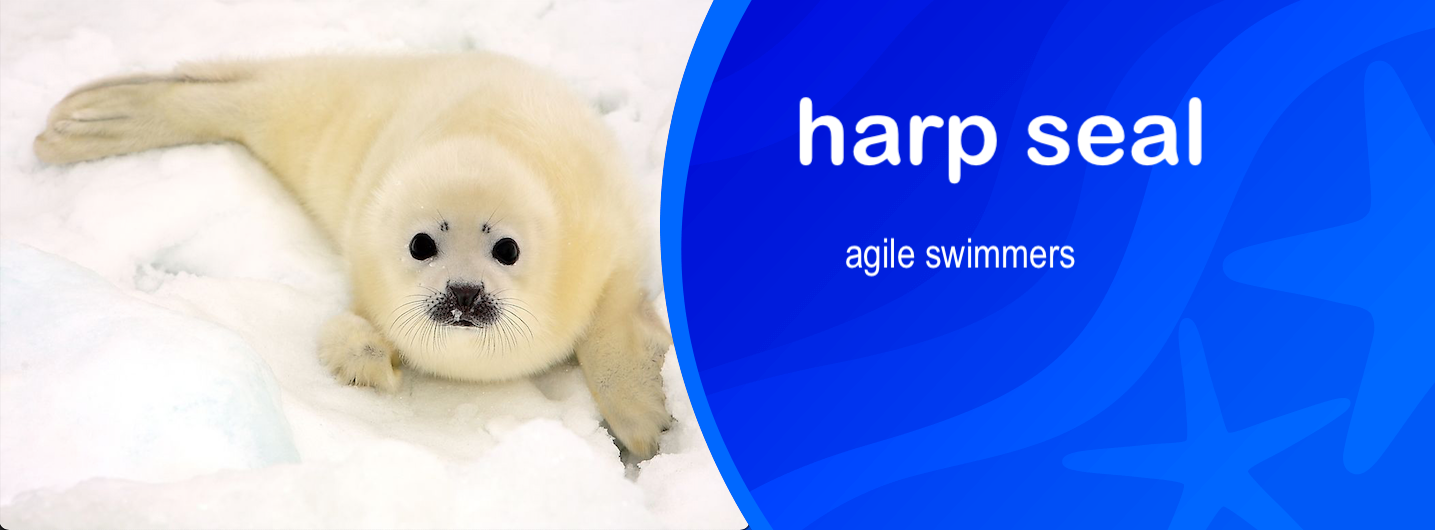
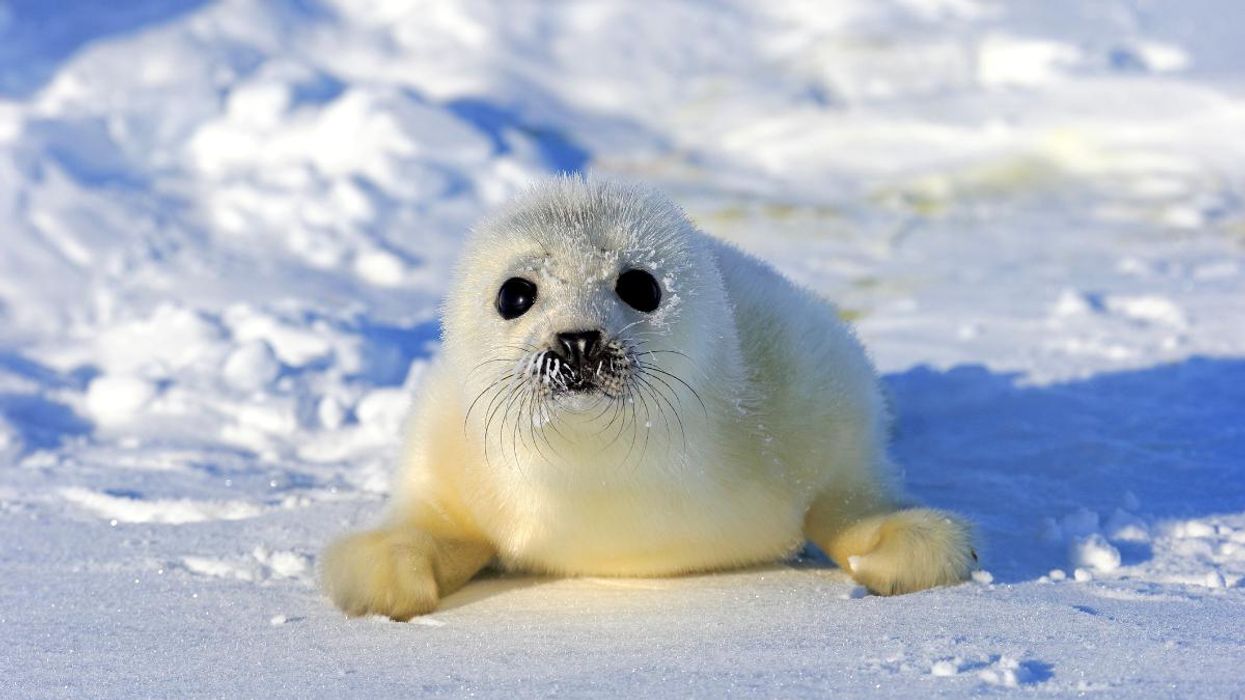
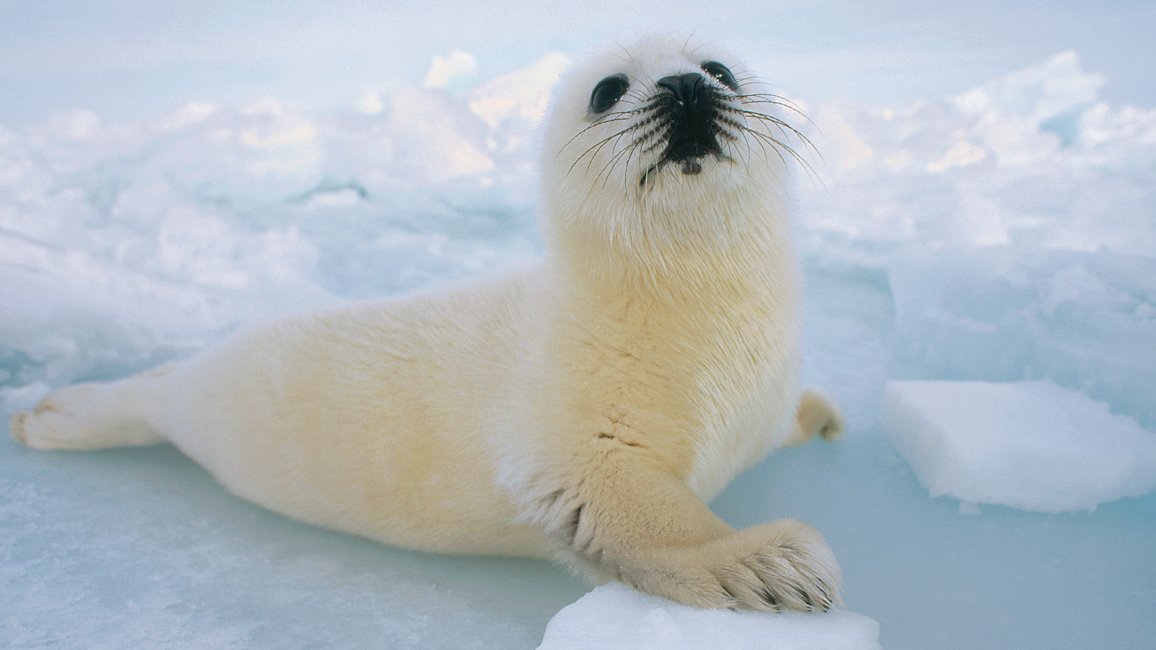

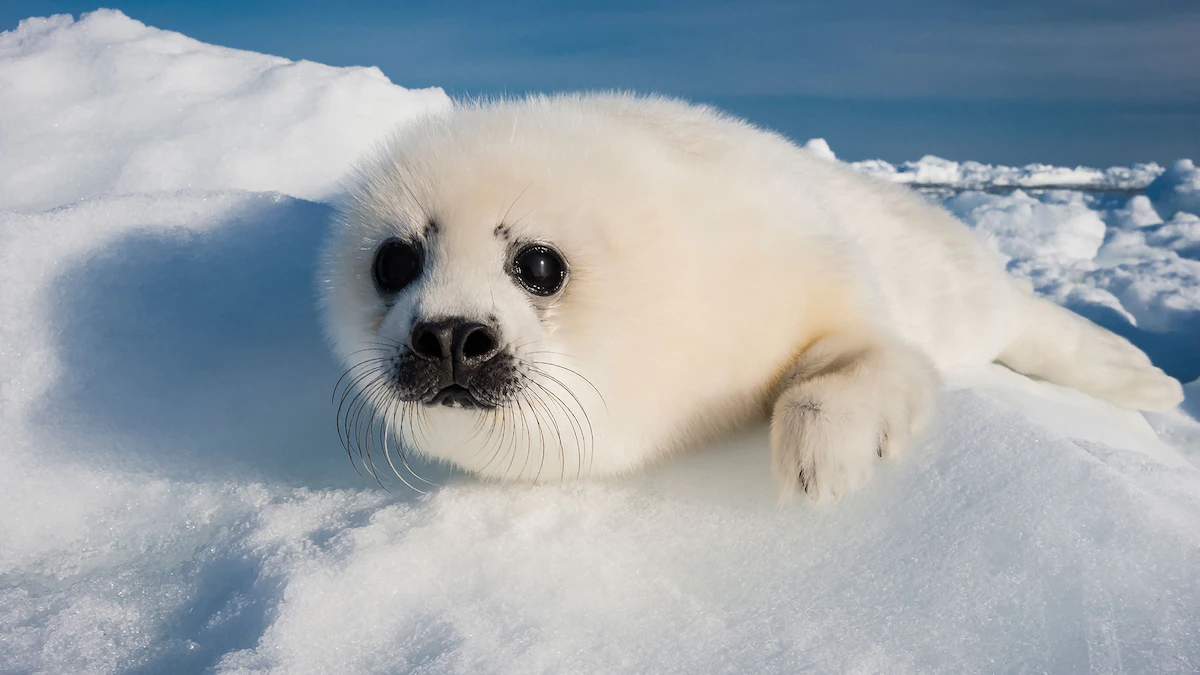
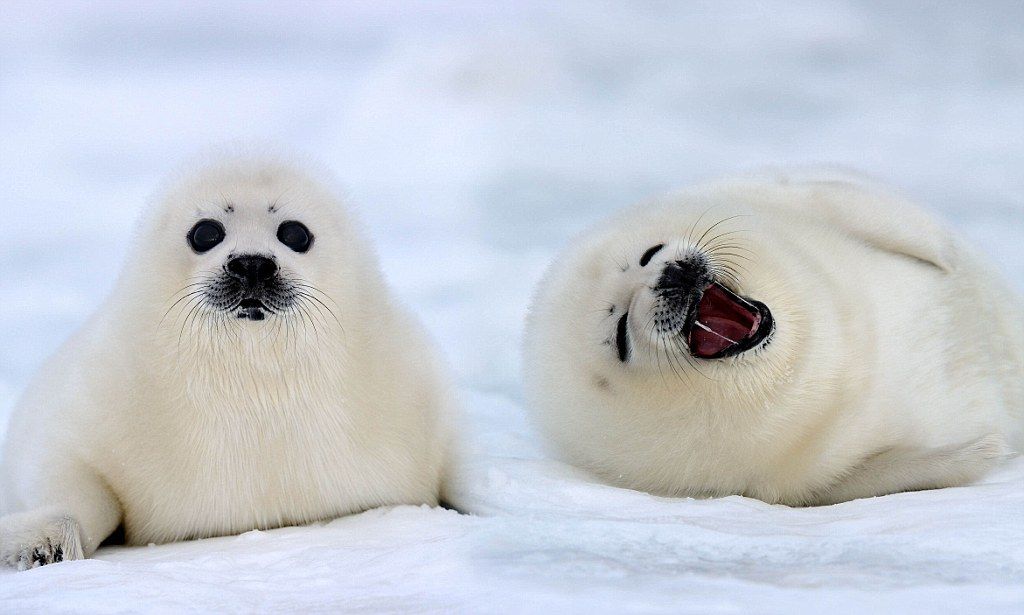
 Harp seals live throughout the cold waters of the North Atlantic and Arctic Oceans. Three populations in the Barents Sea, East Coast of Greenland, and Northwest Atlantic Ocean |
 Harp seals are foraging predators that eat several dozen species of bony fishes and invertebrates. |
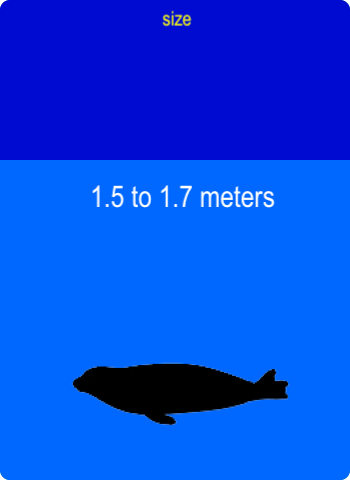
|
Harp seals are light grey in colour, with large harp-shaped rings on their backs. The rings are less distinctive in females, whose back is mostly black, but they can range in colour from dark brown to black. The harp seal's face is black, but not its head. Its pups are born with a fluffy white coat, which gives the pups the nickname "whitecoats," but it's shed after three week's time.
Compared to other phocid seals, the harp seal dives from shallow to moderately deep depths. Dive depth varies with season, time of day and location. In the Greenland Sea sub-population, the average dive rate is around 8.3 dives per hour and dives range from a depth of less than 20 to over 500m.
All three harp seal populations are commercially hunted for oil and fur. They are most often hunted on their breeding grounds. Considering the large concentrations of harp seals during breeding season, the hunt in Canada has been described as the largest slaughter of marine mammals in the world. The size of the harp seal hunt in Canada was aided by government subsidies in the 1990s and increased significantly during this time.